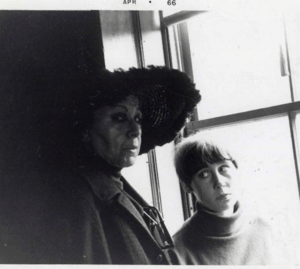Louise Nevelson
Louise Nevelson transformed the concept of sculpture from an object the audience walks around to a space the audience can enter into. Nevelson studied modernist and cubist styles with painter Hans Hofman in Munich in 1931, taking on his aesthetics of the “push and pull” of balanced composition and translating it to sculpture. To support herself, she began teaching for the Education Alliance School of Art in New York in 1937. In a bold move, she marched into the famed Nierendorf Gallery in 1941 and demanded an exhibition, gaining the gallery director’s representation and four solo shows on the strength of her work. Later, depressed by lack of sales, she destroyed many of her sculptures. In the 1950s, she began working with massive wall installations using found pieces of wood that were collaged in geometric grids and covered in paint for a uniform look, emphasizing the relationship of the shapes to one another. Several of these pieces are now owned by the Whitney, the Brooklyn Museum, and MOMA. In the 1970s, she began working with Cor-Ten steel, which rusts on the outside but keeps its structural integrity, allowing her to create sculptures in outside environments around the country.



